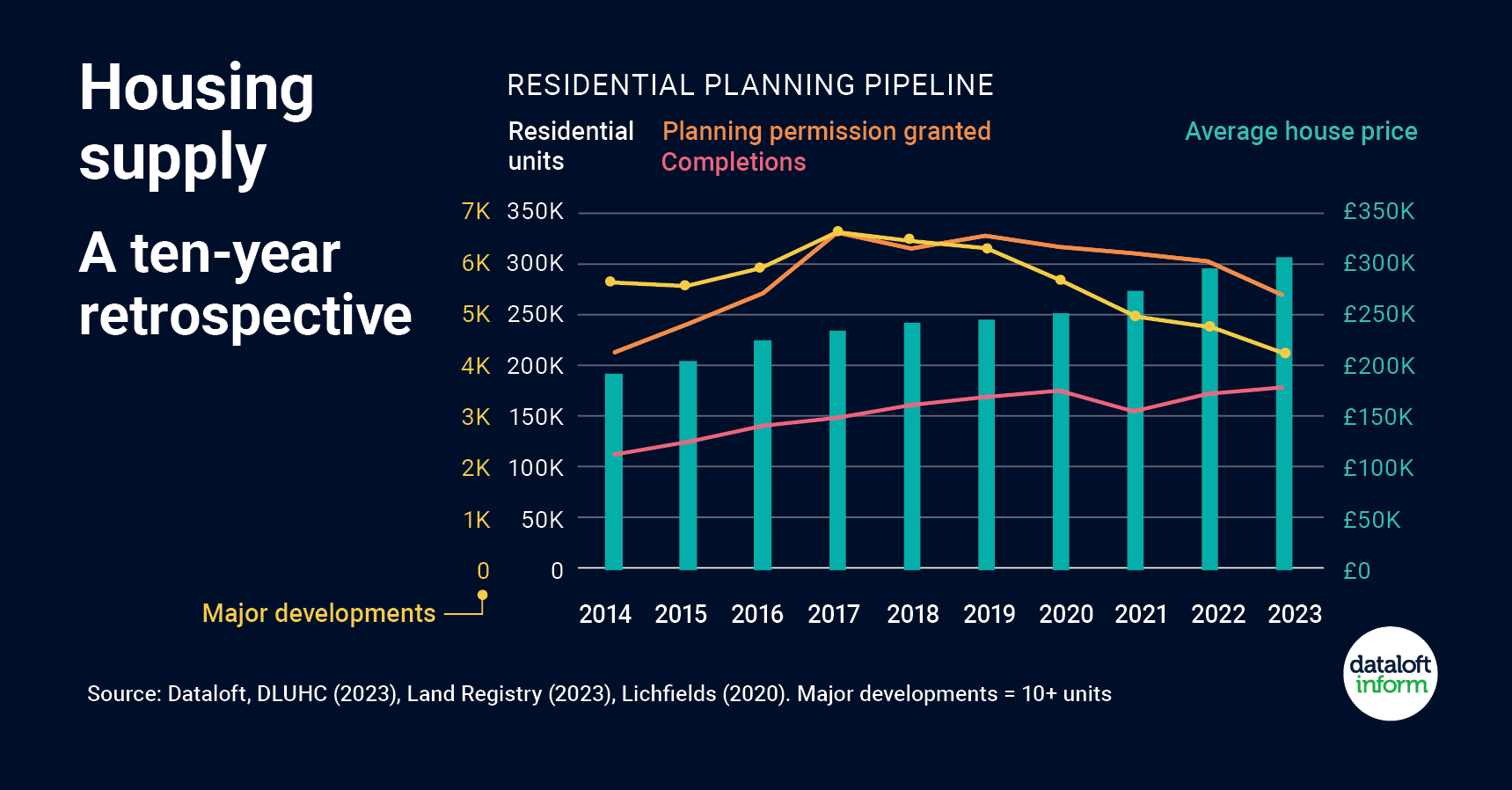
Recently-released statistics on planning applications have revealed a worrying trend of declining major residential approvals across the country. Since reaching its peak at 6,617 in 2017, the number of major residential approvals has steadily decreased, with the latest figures showing only 4,221 approvals, marking the lowest point in a decade. This downward trajectory raises concerns about the future of housing development in the region.
Crawley, is not immune to the effects of this decline. As major residential approvals continue to dwindle nationwide, the impact on local communities like Crawley becomes increasingly evident. With fewer major housing projects receiving approval, the potential for new homes and increased housing supply in the area diminishes.
Despite these concerns, there is a glimmer of hope in the form of increased housing completions. The number of newly completed homes in the past 12 months has reached a 10-year high, with over 177,000 homes finished during this period. This indicates that Crawley and the surrounding regions are still benefiting from the previous peak in residential approvals that occurred between 2017 and 2019. The completion of these homes helps to alleviate some of the immediate pressure on the housing market.
However, it's important to note that the full impact of declining major residential approvals may not be felt immediately. Research conducted by Lichfields in 2020 suggests that developments consisting of over 500 homes can take an average of three years to begin completions, while projects with 200 or more homes may take as long as 8.4 years. Therefore, the repercussions of the current decline in approvals are likely to extend into the foreseeable future.
Interestingly, despite the fluctuations in residential planning pipeline, average house prices in Crawley and its surroundings have continued to rise steadily over the past decade. This suggests that, for the time being, the local housing market remains unaffected by the dwindling number of major residential approvals. It's worth noting that this trend may not persist in the long run, as a sustained decline in housing supply could potentially impact prices.
While the recent statistics on planning approvals reveal a concerning trend of declining major residential approvals, Crawley and the wider West Sussex area continue to experience growth in the housing sector. The completion of a record number of homes in the past year is a positive indicator of ongoing development. However, the potential long-term implications of the current decline in approvals should not be ignored, as they could significantly impact housing supply and potentially affect housing prices in the future. Continued monitoring of the situation and proactive measures to address the decline in major residential approvals will be crucial to ensure the sustainable growth of the housing market in Crawley and its surrounding regions.









